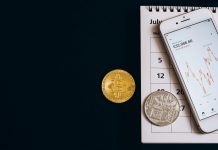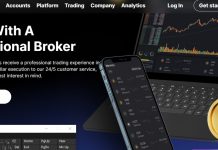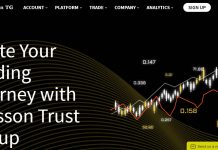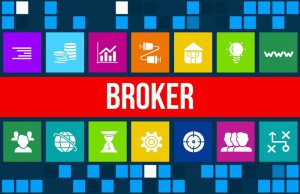 Unfortunately, many people wrongfully associate Forex trading with a scam.
Unfortunately, many people wrongfully associate Forex trading with a scam.
The problem lies in the increasing number of unscrupulous companies marketing false info. The number of Forex-related scams has significantly increased over the past few years, so it’s important for you to be able to identify a hoax. After all, Forex trading should be a potentially profitable experience.
When choosing a broker, always check if they are regulated by a relevant authority.
Simply put, if a broker is not regulated, your money is not safe. Every broker should abide by the rules of a financial authority. In the context of defending citizens from fraud, many countries have established private or state organisations to regulate the Forex market. Generally speaking, these organisations are actively supported by the government.
The top three countries with the most rigorous regulators are:
- the U.S. (CFTC, NFA)
- Japan (FSA Japan)
- the UK (FCA).
Choosing a broker is the very first step you need to take to be able to enjoy your trading experience. But many people don’t know the differences that exist within the range of fully regulated brokers. Let me explain in the simplest way possible.
Types of Brokers
Generally speaking there are DD (Dealing Desk) brokers and NDD (Non-Dealing Desk). NDD brokers include:
- STP ( Straight Through Processing)
- ECN (Electronic Communication Network)
- Hybrid (ECN+STP).
Dealing Desk
We usually refer to DD brokers as market makers. The infamous term “market makers” is used because these brokers usually take the opposite side of traders trades. They make money through spreads and by providing liquidity. They also try to find a matching long or short order from their other clients before taking a countertrade or passing it on to a liquidity provider. They are known to offer artificial quotes, and orders are filled on a discretionary basis.
Non-Dealing Desk
Contrary to DD brokers, Non-Dealing Desk brokers don’t pass their orders to a market maker or liquidity provider. They use both the STP and ECN technologies without a dealing desk and route clients’ trade orders directly to liquidity providers. It allows clients to access real markets with better and faster fills. It is a bridge between clients and liquidity providers, and there are no requotes when an order needs to be filled. We differentiate between two types of NDD brokers: STP and ECN.
STP Brokers
The STP, or Straight Through Processing, technology requires no dealing desk involved. All orders are routed to the broker’s liquidity providers and prices are executed at the bid/ask rate provided by liquidity providers. Liquidity providers in this case are hedge funds, big banks, and investors that effectively act as counterparties to each trade. Usually, the STP broker has an internal liquidity pool that is represented by different liquidity providers that compete for the best bid/ask spreads for an STP broker orders.
The other benefit of an STP broker includes the so-called DMA. DMA stands for Direct Market Access. What it does is passing their client orders directly to their liquidity pool, so orders are filled at the best possible price with only a small mark-up spread by the broker.
You should always aim for the broker with variable spreads. The reason is that the broker with a variable spread is able to pick the best bid from one of the liquidity providers from their own pool and the best ask spread from another liquidity provider. That effectively offers the best possible spread for their clients. The STP execution simply goes without any re-quotes and due to its lightning speed it is very suitable for traders who like to scalp and trade the news.
ECN Brokers
A few years ago, the MT4 ECN seemed excessive. In fact, the initial reaction to this concept was that it seemed like something impossible. If an FX trader wanted to use the standard platform, they were supposed to trade solely with one broker. Nonetheless, the demands of the retail FX trader ultimately became heard, and MT4 ECN was developed.
There are a lot of similarities between the STP and the DMA, but the primary difference is routing. As mentioned above, the STP can choose to deal with different liquidity providers out of their liquidity pool, while ECS acts a form of hub. The hub acts effectively as the major liquidity source as it is represented by banks, hedge funds, and all the big market players. They all get interconnected in order to find counterparties for the orders they are unable to handle internally. Another difference between the STP and ECN is that most ECN trading is usually capped at 0.1 minimum lot size. It is because there are very few liquidity providers allowing for less than 0.1 lots, which proved to be difficult for inexperienced traders who need to trade with smaller amounts of money (1-2k), so a hybrid model has been developed.
Hybrid Model
This is a combination of both ECN and the STP. Usually, with this type of service, brokers are able to focus on providing great customer service, education – that is extremely important – and different market analyses. Blending the ECN or DMA and STP models allows for a fully electronic Forex dealing service. This popular mix allows a Forex broker to fully automate the order entry, dealing with spread pricing and trade execution aspects of their deal execution business.
I personally prefer both the ECN and STP model and enjoy trading on both MT4 and MT5. At this point, my opinion is that the best model is STP, although the hybrid model through the NDD is also an excellent choice. Please take a look at the list and see all the additional features of trading account types!
Applying the STP and ECN models, brokers avoid market making. It is a win-win situation for traders and brokers alike. Brokers don’t want us to lose but rather win because they might earn more from spread or commission the longer we trade with them.
I personally prefer trading with Admiral Markets. You are always welcome to join my live trading webinars and review my analyses.
Cheers and safe trading,


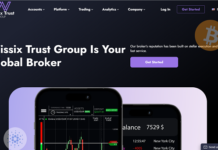





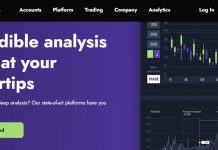
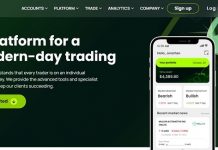
![Reltex Group Reviews: Explore business opportunities by Trading [reltexg.com]](https://comparic.com/wp-content/uploads/2023/12/image001-218x150.jpg)
![Mayrsson TG Reviews: Why Choose Crypto-Trading with Them? [mayrssontg.com]](https://comparic.com/wp-content/uploads/2023/12/image1-218x150.jpg)
